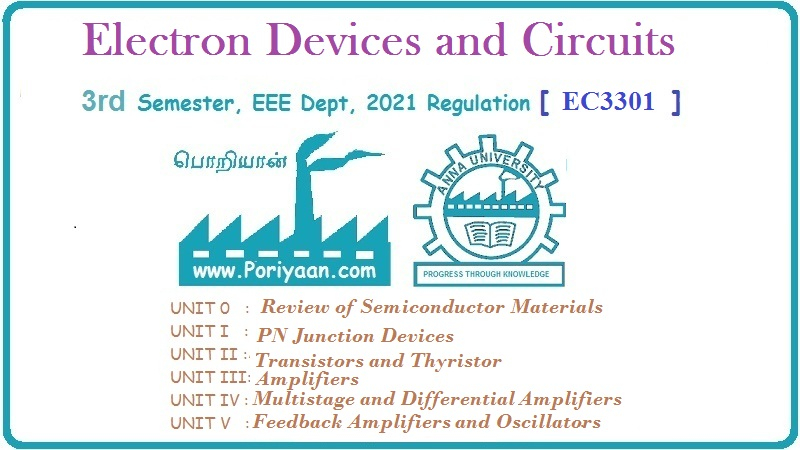Electron Devices and Circuits: Unit IV: Multistage and Differential Amplifiers
Concept of Power Amplifiers (Large Signal Amplifiers)
Features, Impendance Matching, Analysis
• The system consists of many stages connected in cascade. Hence basically it is a multistage amplifier.
Concept of Power Amplifiers (Large Signal Amplifiers)
AU
: Dec.-07, 08, 17, 18
•
Consider a public address system (P.A.) or amplifying system as shown in the
Fig. 8.14.1.

•
The system consists of many stages connected in cascade. Hence basically it is
a multistage amplifier.
•
The input is sound signal of a human speaker and the output is given to the
loudspeaker which is an amplified input signal.
•
The input and the intermediate stages are small signal amplifiers. The
sufficient voltage gain is obtained by all the intermediate stages. Hence these
stages are called voltage amplifiers.
•
But the last stage gives an output to the load like a loud speaker. Hence the
last stage must be capable of delivering an appreciable amount of a.c. power to
the load. So it must be capable of handling large voltage or current swings or
in other words large signals.
•
Such a stage, which develops and feeds sufficient power to the load like
loudspeaker, servomotor, handling the large signals is called Large Signal
Amplifier or Power Amplifier.
•
Power amplifiers find their applications in the public address systems, radio
receivers, driving servomotor in industrial control systems, tape players, T.V.
receivers, cathode ray tubes etc.
1. Features of Large Signal Amplifiers (Power Amplifiers)
•
Input signal level is large of the order of few volts.
•
Output has large current and voltage swings, thus handles large power.
•
The h-parameter analysis is not applicable.
•
Impedance matching with the load is required.
•
Large power dissipation hence transistors used are power transistors with heat
sink.
•
Bulky in nature due to bulkier components required for handling large power.
•
Harmonic distortion is present. Ideally it should be zero hence distortion
analysis is important.
•
Many a times used in audio circuits hence called audio amplifiers or Audio
Frequency (A.F.) power amplifiers.
2. Impendance Matching
•
The power amplifiers are large signal amplifiers used to feed the loads like
loudspeakers having low impedance.
•
It is necessary to transfer maximum power to the load.
•
Thus to transfer maximum power to the load, the load impedance and output
impedance of power amplifier must be matched.
•
Hence impedance matching is required in power amplifiers.
•
The common collector or emitter follower circuit is used in power amplifiers
having low output impedance.
•
The step down transformers are also used at the output side for impedance
matching.
3. Analysis of Power Amplifier
•
The h-parameters are applicable to small signal amplifiers and are valid only
if input signal is small.
•
The large signal amplifiers use large signals hence h-parameter analysis can
not be used for the analysis of power amplifiers.
•
The analysis of power amplifiers is carried out with the help of load line
drawn on the output characteristics of the transistors used in it.
4. Comparison of Small Signal and Large Signal Amplifiers

Review Questions
1. State the features of large signal amplifiers.
2. Compare voltage and power amplifiers.
AU : Dec.-17, 18, Marks 5
3. Justify : Impedance matching is required in power amplifiers.
4. Justify : The h-parameters cannot be used for the power
amplifiers.
5. Compare voltage and power, amplifiers.
AU : Dec.-18, Marks 6
Electron Devices and Circuits: Unit IV: Multistage and Differential Amplifiers : Tag: : Features, Impendance Matching, Analysis - Concept of Power Amplifiers (Large Signal Amplifiers)
Related Topics
Related Subjects
Electron Devices and Circuits
EC3301 3rd Semester EEE Dept | 2021 Regulation | 3rd Semester EEE Dept 2021 Regulation
